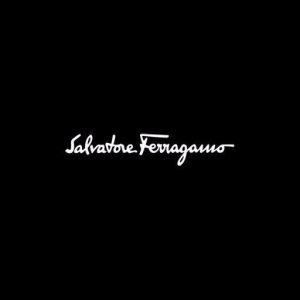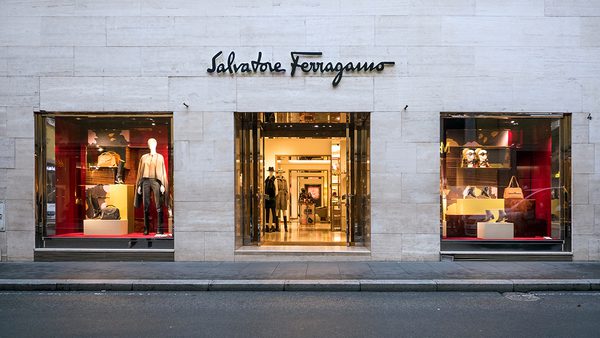Contents
Summary
Salvatore Ferragamo is a globally renowned luxury brand synonymous with Italian elegance, artisanal craftsmanship, and innovative design. Established in 1927, it gained fame for iconic footwear creations like the wedge heel and invisible sandal, earning the founder the title “Shoemaker to the Stars.” Today, Ferragamo offers a diverse range of luxury products, including apparel, handbags, accessories, and fragrances, all marked by timeless sophistication and the iconic Gancini logo. With a strong global presence and a commitment to sustainability, the brand continues to blend tradition with modernity, solidifying its status as a hallmark of refined luxury.
History
Born eleventh member of a family of fourteen children in a village skirting Naples, Salvatore Ferragamo made his first pair of high heel shoes for his sister at the age of nine. After working with a local shoemaker in Naples, he opened a small store in the front doorway of his parents’ home at the age of twelve. Ferragamo displayed his business acumen by opening his store—which faced the local church—on Sunday when affluent locals were attending the service and many of them placed orders.
In 1914, he shifted to Boston, Massachusetts where one of his brothers worked in a cowboy boot factory. After a brief stint there, Ferragamo and his brothers moved to Santa Barbara where he opened a shop for made-to-measure shoes and repair, evolving to designing footwear for the cinema. When World War I ended, the film industry relocated to Hollywood and Ferragamo moved his business to Hollywood Boulevard, designing shoes for iconic films Thief of Baghdad and The Ten Commandments and patronised by stars like Joan Crawford, Vivien Leigh, Ava Gardner, Rita Hayworth, Mae West, Greta Garbo, Audrey Hepburn, Sophia Loren and Marilyn Monroe.
Dismayed by the inferior quality of machine-made shoes, he envisioned mass production of handmade shoes and returned to Florence in the late Twenties. Here, he created partnerships with artisans and opened a workshop on Via Mannelli from where he shipped shoes to the U.S. In 1933, Ferragamo filed for bankruptcy but was able to expand his operations again in the fifties, with seven hundred artisans.
His most iconic shoe is “The Rainbow” platform sandal designed for Judy Garland in 1938 as a tribute to her song “Over the Rainbow” in The Wizard of Oz — designed using slabs of cork covered with suede with golden kidskin straps. In 1947, he won the Neiman Marcus Award for “Invisible Shoe” made with nylon thread. Another icon is Cage Heel in 1955, which is hollow and light but exceptionally strong. Most importantly, his experimentation with cork led to designing the wedge.
Salvatore Ferragamo died at sixty-two leaving his wife and five children to run the company who added classic ready-to-wear and accessories. Today, it is a public company with revenues reportedly in excess of €1.3 billion. What’s admirable is that despite growing from a modest individual to a team of 4,000- strong employees, the passion and teamwork during Ferragamo’s initial alliance with craftsmen in Florence continues to define the company. His life and works is documented in a museum in Palazzo Spini Feroni and in 2013, Ferragamo Foundation opened in Florence to educate young designers, based on his ideas and work.
Vision
Salvatore Ferragamo’s vision is deeply rooted in the cultural heritage and artisanal traditions of Florence, a city renowned for its artistic legacy. He sought to integrate the rich craftsmanship and creative spirit of Florence into his designs, blending traditional techniques with modern design. By drawing inspiration from the materials, colors, and artistic movements of the 1920s, Ferragamo infused his creations with a distinct avant-garde flair that set them apart from other fashion houses of the time. His work became a living testament to the city’s artistic culture, representing Florence’s unique blend of history, artistry, and innovation.
Ferragamo’s ultimate goal was to elevate Florence to a prominent position on the global fashion map. He believed that the city’s rich heritage could not only serve as a foundation for his designs but also inspire the broader fashion world. Through his collections, Ferragamo aimed to showcase Florence’s creative prowess, making it synonymous with luxury, elegance, and craftsmanship. His vision extended beyond fashion—it was about preserving the legacy of Florence’s artisanal culture while pushing the boundaries of innovation, creating a seamless fusion of past and future.
In realising this vision, Ferragamo transformed his luxury fashion brand into a global ambassador for Florentine craftsmanship. His collections, known for their impeccable quality and timeless style, continue to reflect the values and traditions of the city he loved. By marrying local artistry with a forward-thinking approach, Ferragamo not only put Florence on the world stage but also ensured that his brand would stand as a symbol of elegance, innovation, and cultural appreciation for generations to come.
Mission
Salvatore Ferragamo’s mission was rooted in the belief that footwear should be a perfect harmony of beauty and function. After studying the anatomy of the foot at the University of California, Santa Barbara, Ferragamo developed a deep understanding of the biomechanics of walking, which informed his approach to shoemaking. His goal was to create shoes that not only captured the aesthetic sensibilities of high fashion but also provided superior comfort, making walking easier for those who wore them. He aimed to revolutionize the fashion world by proving that luxury footwear could be as comfortable as it was stylish.
Ferragamo’s dedication to crafting shoes that were both elegant and functional was a driving force throughout his career. He meticulously designed each shoe to support the foot’s natural movements, combining artisanal craftsmanship with innovative techniques to improve the overall walking experience. Whether it was the use of ergonomic designs, lightweight materials, or custom fits, Ferragamo continuously pushed the boundaries of what was possible in footwear design. His mission was not only to enhance the aesthetic appeal of his shoes but to ensure that comfort was never compromised in the pursuit of beauty.
At the heart of Ferragamo’s mission was a desire to elevate the experience of wearing shoes. By marrying style with comfort, he aimed to create footwear that could be worn effortlessly, enhancing both the wearer’s look and their physical ease. This commitment to balance between form and function became a defining characteristic of the Ferragamo brand and continues to influence the luxury footwear industry today. Ferragamo’s mission was not just to design shoes, but to craft an experience that embodied elegance, innovation, and comfort in every step.
Products and Services
Salvatore Ferragamo is a luxury brand renowned for its ready to wear, fashion accessories, footwear, leather goods, eyewear, watches, fragrances, and jewellery. Each of these product lines embodies the luxury brand’s core values of craftsmanship, elegance, and innovation. Ferragamo’s apparel blends timeless design with modern trends, providing pieces that are both sophisticated and versatile. From impeccably tailored suits to chic dresses, each collection is designed for individuals who appreciate luxury and attention to detail.
Footwear remains the cornerstone of Salvatore Ferragamo’s luxury brand, a legacy built on the founder’s commitment to combining style with comfort. The brand’s shoes are celebrated for their exquisite design, innovative materials, and ergonomic construction, offering both men and women a range of styles—from classic loafers and pumps to avant-garde heels and sneakers. Ferragamo’s leather goods, including handbags, wallets, and belts, are handcrafted with the finest materials and showcase the brand’s mastery of leatherwork, reflecting its heritage of Italian craftsmanship and luxury.
In addition to apparel and footwear, Ferragamo offers a curated selection of fashion accessories and lifestyle products. This includes sophisticated eyewear, elegant watches, and a line of fragrances that embody the brand’s essence. The jewellery collection, with its sleek designs and precious materials, adds another dimension to Ferragamo’s product portfolio, providing timeless pieces that complement the brand’s refined aesthetic.
Awards and Recognition
Salvatore Ferragamo is globally recognized as a premier luxury fashion brand, celebrated for its impeccable craftsmanship, Italian elegance, and innovative designs. Renowned as the “Shoemaker to the Stars,” the brand’s legacy began with iconic footwear that redefined style through creations like the wedge heel and invisible sandal. Over time, Ferragamo expanded into a full-fledged luxury house, offering apparel, leather goods, fragrances, and accessories, all distinguished by timeless sophistication and the iconic Gancini logo. With a presence in high-end boutiques worldwide and a commitment to sustainability, Ferragamo continues to appeal to a discerning clientele, blending tradition with modernity to maintain its status as a symbol of refined luxury.
Leadership Team
Salvatore Ferragamo (Founder)
Leonardo Ferragamo (Chairman)
Marco Gobbetti (CEO)
Angelica Visconti (Vice Chairman)
References
- Official website Salvatore Ferragamo
- LinkedIn profile of Salvatore Ferragamo LinkedIn
- Luca Guadagnino’s New Salvatore Ferragamo Documentary Vogue
- Instagram profile of Salvatore Ferragamo Instagram
- How A Penniless Ten-Year Old Became A Shoemaker Of Dreams Forbes
- Salvatore Ferragamo Fashion Foundation Ferragamo
- Facebook profile of Salvatore Ferragamo Facebook
- Salvatore Ferragamo Launches Fashion Foundation Vogue
- Salvatore Ferragamo Readies Fashion and Art Exhibition WWD
- The Amazing Brand Story of Salvatore Ferragamo Luxury Abode
- Twitter profile of Salvatore Ferragamo Twitter
- Salvatore Ferragamo launches foundation My Fashion Life
- Youtube Channel of Salvatore Ferragamo Youtube
- Salvatore Ferragamo launches foundation Fashion United
- Leonardo Ferragamo Yatching World
- New Ferragamo Fashion Foundation Unveiled MBS Group
- Return To Italy Vogue
- Culture and Community Salvatore Ferragamo
- Wikipedia page of Salvatore Ferragamo Wikipedia
- Salvatore Ferragamo Dies NY Times





